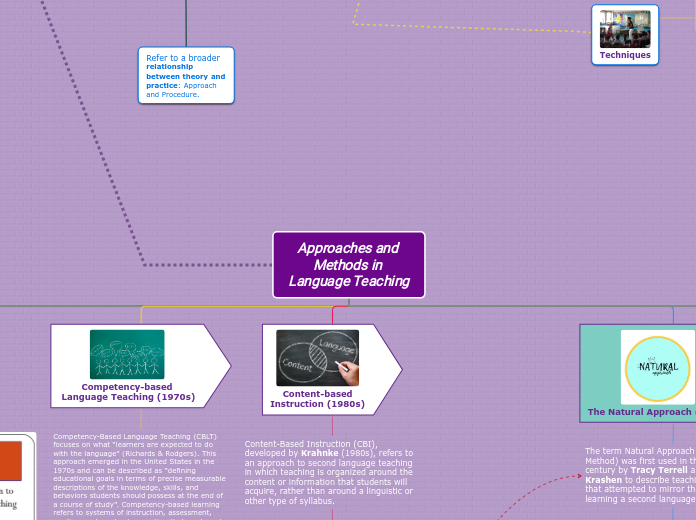Approaches and Methods in Language Teaching

Project-basedlearning 1897 (beginning of 20th)
John Dewey is recognized as one of the early proponents of project-based education through his idea of "learning by doing" (1897). Educational research has advanced this idea of teaching and learning into a methodology known as "project-based learning". William Heard Kilpatrick built on the theory of Dewey and introduced the project method as a component of Dewey's problem method of teaching.
* Project-based learning definitions.
* Differences between TBL and PBL
* "When Students engange in teaching"
* Examples of Project-based learning.
Project-based learning goals:
Students work on a project over an extended period of time – from a week up to a semester – that engages them in solving a real-world problem or answering a complex question. They demonstrate their knowledge and skills by creating a public product or presentation for a real audience.
As a result, students develop deep content knowledge as well as critical thinking, collaboration, creativity, and communication skills. Project Based Learning unleashes a contagious, creative energy among students and teachers.

Subtopic

THE SITUATIONAL-STRUCTURAL APPROACH (evolved between 1920s and 1930s)

THE AUDIOLINGUAL METHOD (evolved in the 1950s and 60s)

PRESENTATION PRACTICE AND PRODUCTION (1960s)
Dates from the late 1960s
PRESENTATION, PRACTICE AND PRODUCTION is a procedure whose main objective is to place language in clear situational CONTEXTS. A variation on Audiolingualism.
PPP

Total Physical Response (1965)
Total Physical Response (TPR) is a language teaching method built
around the coordination of speech and action; it attempts to teach language through physical (motor) activity. Developed by James Asher (1965), it drawson several traditions, including developmental psychology, learning theory, and humanistic pedagogy, as well as on language teaching. He claims that speech
directed to young children consists primarily of commands, which children
respond to physically before they begin to produce verbal responses.
Asher has elaborated an account of what he feels facilitatesor inhibits foreign language learning. For this dimension of his learningtheory he draws on three rather influential learning hypotheses:
1. There exists a specific innate bio-program for language learning,
which defines an optimal path for first and second language
development.
2. Brain lateralization defines different learning functions in the left- and
right-brain hemispheres.
3. Stress (an affective filter) intervenes between the act of learning and
what is to be learned; the lower the stress, the greater the learning.

The bio-program
Asher’s Total Physical Response is a “Natural Method” and sees three processes as central:
1. Children develop listening competence before they develop the ability to speak. At the early stages of first language acquisition, they canunderstand complex utterances that they cannot spontaneously produce or imitate.
2. Children’s ability in listening comprehension is acquired because childrenare required to respond physically to spoken language in the form of parental commands.
3. Once a foundation in listening comprehension has been established, speech evolves naturally and effortlessly out of it.

Brain lateralization
Asher sees Total Physical Response as directed to right-brain learning,whereas most second language teaching methods are directed to leftbrain learning. Asher holds that the child language learner acquires language through motor movement – a right-hemisphere activity. Right-hemisphere activities must occur before the left hemisphere can process language for production.

Reduction of stress
The key to stress-free learning is to tap into the natural bio-program for language development and thus to recapture the relaxed and pleasurable experiences that accompany
first language learning. By focusing on meaning interpreted through movement, rather than on language forms studied in the abstract, the learner is said to be liberated from self-conscious and stressful situations and is able to devote full energy to learning.
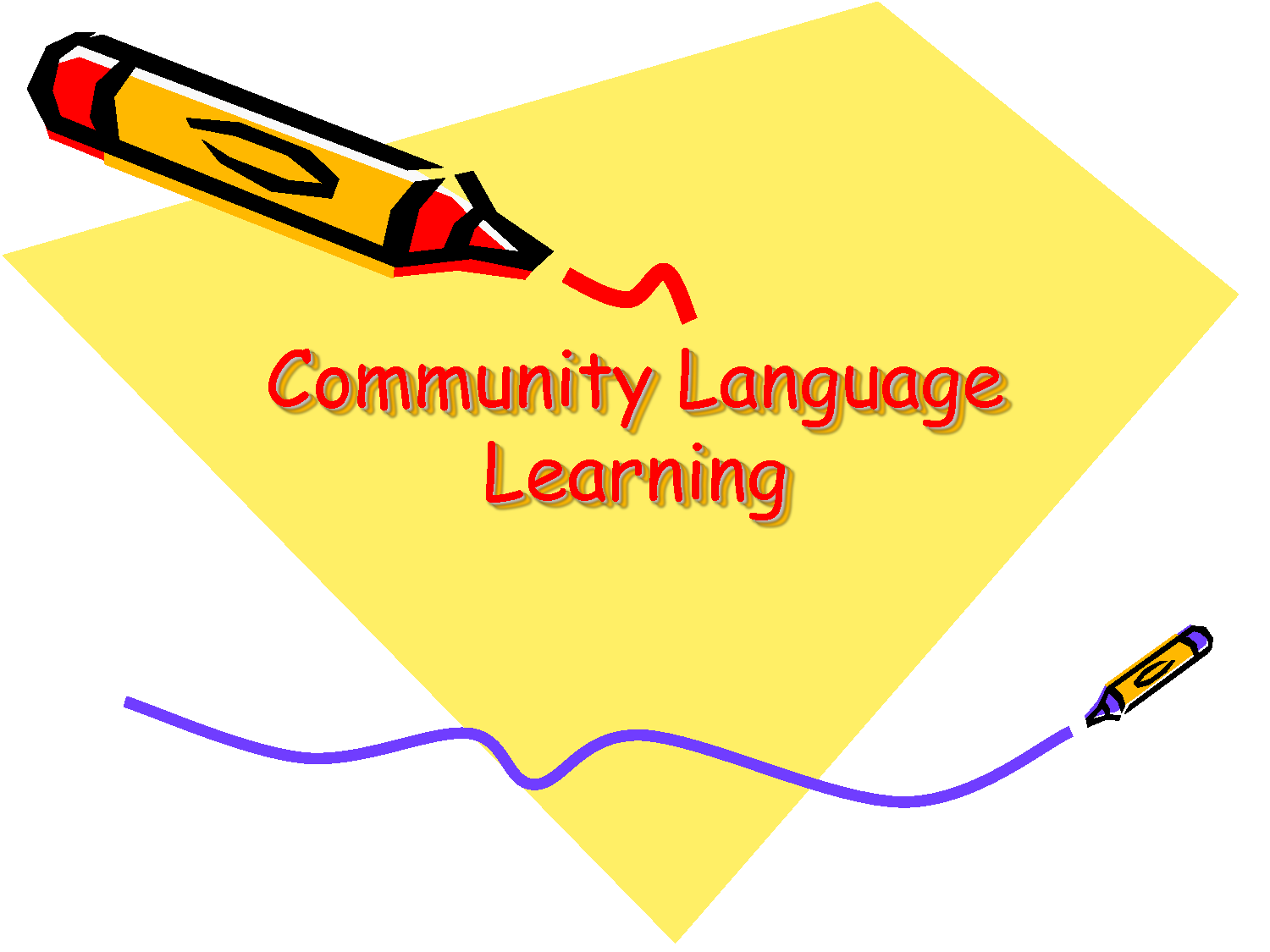
Community Language
Learning (late 1960s)
Community Language Learning (CLL) is the name of a method developed by Charles A. Curran (late 1960s). This method advises teachers to consider their students as 'whole persons.' Whole-person learning means that teachers consider not only their students' intellect, bur also have some understanding of the relationship among students ' feelings, physical reactions, instinctive protective reactions, and desire to learn. His application of psychological counseling techniques to learning is known as Counseling-Learning. A language counselor does not mean someone trained in psychology; it
means someone who is a skillful understander of the struggle students
face as they attempt to internalize another language. The teacher who can 'understand' can indicate his acceptance of the student. By understanding students' fears and being sensitive to them.
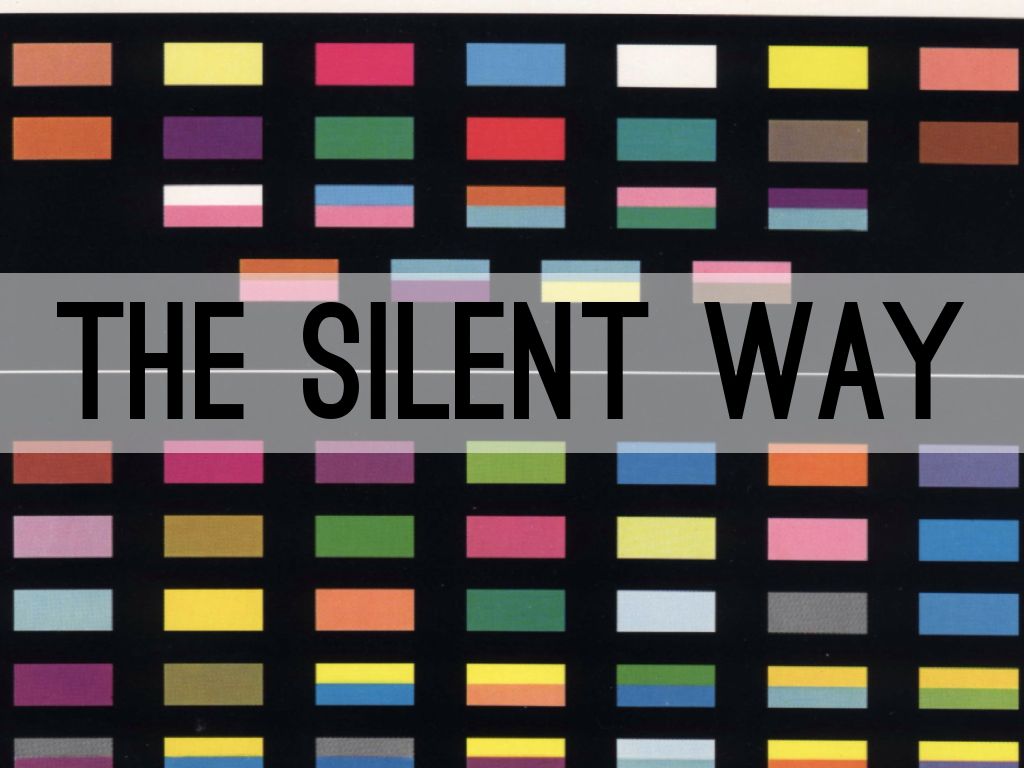
The Silent Way (early 1970s)
The Silent Way is the name of a method of language teaching devised by Caleb Gattegno (early 1970s). It is based on the premise that the teacher should be silent as much as possible in the classroom but the learner should be encouraged to produce as much language as possible.

Suggestopedia (mid 1970s)
Suggestopedia, also known as Desuggestopedia, is a method developed by Georgi Lozanov (mid 1970s). The application of the study of suggestion to pedagogy, has been developed to help students believe that they can be successful and, thus, to help
stufents overcome the barriers to learning.
The most conspicuous characteristics of Suggestopedia are the decoration, furniture, and arrangement of the classroom, the use of music, and the authoritative behavior of the teacher.
A most conspicuous feature of Suggestopedia is the centrality of music and musical rhythm to learning.
There are three functions of music in therapy:
to facilitate the establishment
and maintenance of personal relations
to use the unique potential of rhythm to
energize and bring order
to bring about increased selfesteem
through increased self-satisfaction in musical performance
There are three principal theoretical components through which desuggestion and suggestion operate and that set up access to reserves.
Authority: people remember best and are most influenced
by information coming from an authoritative source.
Infantilization: in the child’s role the learner takes part in role playing, games, songs, and gymnastic exercises
Double-planedness: the learner learns not only from the effect of direct instruction but from the environment in which the instruction takes place.

CLT Since (1970s)
Also referred to as the COMMUNICATIVE APPROACH
The goal of language learning is COMMUNICATIVE COMPETENCE. A language is learnt through communication. CLT is a set of general principles that refer to how communication can be the focus of teaching and learning.
Principles: *learners learn a language using it to communicate *Authentic and meaningful communication are the goal of classroom activities. *Fluency is an important dimension. *Communication involves the integration of different language skills. *Learning involves trial and error.
CLT
It developed through the Council of Europe
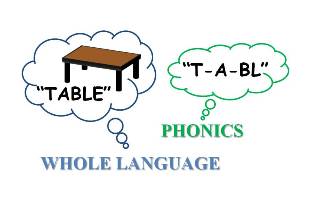
Whole Language (1970s)


Competency-based
Language Teaching (1970s)
Competency-Based Language Teaching (CBLT) focuses on what “learners are expected to do with the language” (Richards & Rodgers). This approach emerged in the United States in the 1970s and can be described as “defining educational goals in terms of precise measurable descriptions of the knowledge, skills, and behaviors students should possess at the end of a course of study”. Competency-based learning refers to systems of instruction, assessment, grading, and academic reporting that are based on students demonstrating that they have learned the knowledge and skills they are expected to learn as they progress through their education.

Content-based
Instruction (1980s)
Content-Based Instruction (CBI), developed by Krahnke (1980s), refers to an approach to second language teaching in which teaching is organized around the content or information that students will acquire, rather than around a linguistic or other type of syllabus.
It is the teaching of content or information in the language being learned with little or no direct or explicit effort to teach the language itself separately from the content being taught.
The Natural Approach (1983)
The term Natural Approach (or Natural Method) was first used in the nineteenth century by Tracy Terrell and Stephen Krashen to describe teaching methods that attempted to mirror the processes of learning a second language.
Learners were initially exposed to meaningful language, not forced to speak until they felt ready to, and not corrected or given explicit grammar instruction. The method was characterized by a lot of teacher talk, made intelligible through the use of visual aids and actions.
Theory of language: Krashen and Terrell see communication as the primary function of language, and since their approach focuses on teaching communicative abilities, they refer to the Natural Approach as an example of a communicative approach.
Theory of learning: Krashen and Terrell make continuing reference to the theoretical and research base claimed to underlie the Natural Approach and to the fact that the method is unique in having such a base.

Krashen’s language acquisition theory
The acquisition/learning hypothesis: there are two distinctive ways of developing competence in a second or foreign language.
Acquisition refers to an unconscious process that involves the naturalistic development of language proficiency through understanding language and through using language for meaningful communication.
Learning, by contrast, refers to a process in which conscious rules about a language are developed.
The monitor hypothesis: conscious learning can
function only as a monitor or editor that checks and repairs the output. Therefore,aquisition is always much better for learnig.
The natural order hypothesis: certain grammatical structures or morphemes are acquired before others in first language acquisition of English, and a similar natural order is found in second language acquisition.
The input hypothesis: first, the hypothesis relates to acquisition, and not to learning. Second, people acquire language best by understanding input that is slightly beyond their current level of competence.
The affective filter hypothesis: emotional state or attitudes as an adjustable filter that freely passes, impedes, or blocks input necessary to acquisition. The hypothesis is built on research in second language acquisition, which has identified three kinds of affective or attitudinal variables related to second language acquisition:
Motivation. Learners with high motivation generally do better.
Self-confidence. Learners with self-confidence and a good self-image tend to be more successful.
Low Anxiety. Low personal anxiety and low classroom anxiety are more conducive to second language acquisition.

Multiple Intelligences (1983)
Multiple Intelligences (MI) is based on the work of Howard Gardner (1983). He notes that traditional IQ tests measure only logic and language but the brain has other equally important types of intelligences. He argues that all humans have these intelligences but people differ in the strenght and combination of them. However, they can be enhanced through training and practice.

Linguistics

Logical/Mathematical

Spatial/Visual

Musical

Bodily/Kinaesthetic

Interpersonal

Intrapersonal

Naturalistic
Multiple Intelligences.
What learning style are you?
What type of learner are you? Click the world and answer it!

Technology and Education:
Digital literacy (1997)
WHAT IS DIGITAL LITERACY?
The term 'digital literacy' was coined in 1997 by Paul Gilster who defined it as “the ability to both understand and use digitised information”
“Digital literacy” is the ability to use technology to find information, evaluate sources, create content, and communicate with others effectively. It’s a skillset used to navigate the new technological paradigm in which society operates. In order to be an effective learner in an online environment, it’s extremely beneficial to be digitally literate.
Subtopic
"Digital literacy" is the ability to appreciate the potential of ICT to support innovation in industrial, business and creative processes. Learners need to gain the confidence, skills, and discrimination to adopt ICT in appropriate ways. Digital literacy is seen as a ‘life skill’ in the same way as literacy and numeracy.
WHY DIGITAL LITERACY IS IMPORTANT?
Subtopic

Gamification (2002)
Nick Pelling coined the term GAMIFICATION in 2002 meaning "applying game- like accelerated user interface design to make electronic transactions both enjoyable and fast. it is de use of game thinking and game mechanics in non-game contexts to engage users in solving problems motivate them to certain behaviour.
The concept of Gamification is basically new, and according to Werbach and Hunter (2012), is the
use of game elements and game design techniques in non-game contexts. It is based in the success of the gaming industry, social media, and decades of research in human psychology.
Basically, any task, assignment, process or theoretical context can be gamified.
The main objectives focuses on increasing the participation of a person, which most of the time is called or mentioned as an “user”, and motivate him/her by incorporating game elements and
techniques, like leaderboards and immediate feedback. This
Life Saver / Virtual reality CPR
Advantages of Gamification
* Students feel ownership over their learning.
* Relaxed atmosphere. Fun in the classrooom.
* Students may uncover intrinsic motivation for learning.
* Students can explore different identities trough different avatars and characters.
* Students often are more confortable in gaming environments applications.
Desadvantages of Gamificaiton
* Requires access to computer and internet connection
* Poor design in games leads to a disengagement and
confusion.
Gamification for LESL.
Gamification is used in a variety of game elements (both dynam-ics and mechanics) for LESL in digital environments. The most commonly used elements for gamifying LESL is feedback, challenge, point, reward, leaderboard, and level. The least frequently used game elements for gamifying LESL environments were curiosity, warning signal, medal, chunking, avatars, and virtual credits.
Almost all the reviewed studies reported that the use of gamification for LESL was beneficial in terms of learners’ experiences. The most commonly used describing words for gamified LESL environments were ‘enjoyable’, ‘fun’, ‘attractive’, ‘interactive’, and ‘interesting’. Among all publications, 13 articles reported that the learning experiences of learners for gamified LESL were ‘positive’.
Class Dojo platform

Blended Learning Integration (21th)
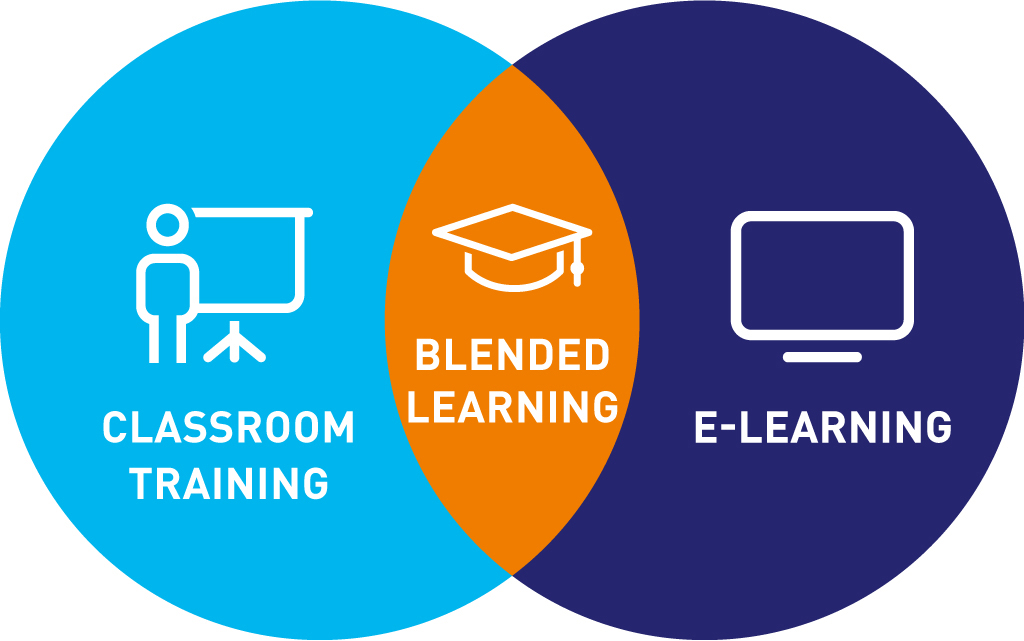
Blended Learning VIDEO
Subtopic
Designed to make learning English stimulating, exciting and engaging, Poptropica English is a truly innovative Blended
Learning course that delivers a curriculum packed full of stories and quests. Poptropica English Islands, a more
intensive version of Poptropica English, allows pupils to enter a fun world of adventure where they develop solid
English Language skills and are prepared for external exam topics.undefined
Technology is rapidly changing and an increasing number of organisations and private learning institutions are beginning to see the benefits of a blended learning approach. Gradually, the union between face-to-face instruction and technology-based learning is producing new and creative ways to enrich the educational experience and make learning fun, exciting, and even more beneficial.
Blended learning is an approach to education that combines online educational materials and opportunities for interaction online with traditional place-based classroom methods. It requires the physical presence of both teacher and student, with some elements of student control over time, place, path, or pace.
The dos
1. Offer a wide mix of activities.
2. Assign group work and encourage peer support.
3. Provide assignments of varying difficulty
The don’ts
1. Teach to the lowest proficiency level.
2. Only focus on fun.

Flipped learning (2007)
Flipped learning is a pedagogical approach
in wich direc instructions moves from
the group learning space to the invididual
learning space, and the resulting group space
is transformed into a dynamic, interactive
learningn environment where the educators guides students as the apply concepts and engage creatively in the subject matter.
Jon Bergmann: In 2007, HE discovered some software that would record lectures live. Then in the spring of that year we had an idea for what is now known as the flipped classroom, where he stopped giving the lectures. He committed the following year to prerecording all our lectures, as he now had a bigger vision for that. As a note, he didn't call it the flipped classroom--he called it pre-broadcasting--and eventually it became known as the flipped classroom or inverted classroom.

TRADITIONAL VS FLIPPED CLASSROOM

Neuroscience
Education and
Teaching (21th)
Educational neuroscience (or neuroeducation, a component of Mind Brain and Education) is an emerging scientific field that brings together researchers in cognitive neuroscience, developmental cognitive neuroscience, educational psychology, educational technology, education theory and other related disciplines to explore the interactions between biological processes and education.
Neuroscience is the study of
the brain and the nervous system
WHY DOES TEACHER SHOULD INCLUDE NEUROSCIENCE IN TEACHING?undefined

NEUROSCIENCE
The neuroscience of how the brain learns and what influences the most successful brain acquisition and application of learning should be included in all teacher education programs.
Teachers need to be prepared with foundational knowledge to understand, evaluate, and apply the neuroscience of learning. With this knowledge they will be able to recognize future implications from this rapidly expanding field of research to increase the effectiveness of their teaching and build and sustain students’ joy of learning.
Subtopic
Cognitive Neuroscience is “..a branch of neuroscience concerned with the biological processes of the nervous system which form the basis of cognitive functioning”. It’s our thinking, remembering, reasoning, decision-making — how the brain learns, retrieves and applies information– everything involving conscious intellectual activity.
9 Functions of the PREFONTAL CORTEX
* EMPATHY
* INSIGHT
* RESPONSE FLEXIBILITY
* EMOTION REGULATION
* BODY REGULATION
* MORALITY
* INTUITION
* ATTUNED COMMUNICATION
* FEAR MODULATION

FRONTAL CORTEX

What methodoly?
According to academic research, linguists have demostrated that there is not one single best method for everyone in all contexts, and that no one teaching method is inherently superior to the others.
Also, it is no way possible to apply the same methodology to all leaners who have different objectives, environments and learning needs.
Teaching Methods for Inspiring the Students of the Future
Good teachers do not have one method of teaching or addressing a class. You should never judge a teacher by the teaching method they use. The real criteria is what is the main learning style in a class room and is the teacher using a method that address that learning style 60% of the time and addressing the other 2 learning styles in portion to the percentage of the class.
What makes a good teacher great?undefined

Approaches

Procedures
Refer to a broader relationship between theory and practice: Approach and Procedure.
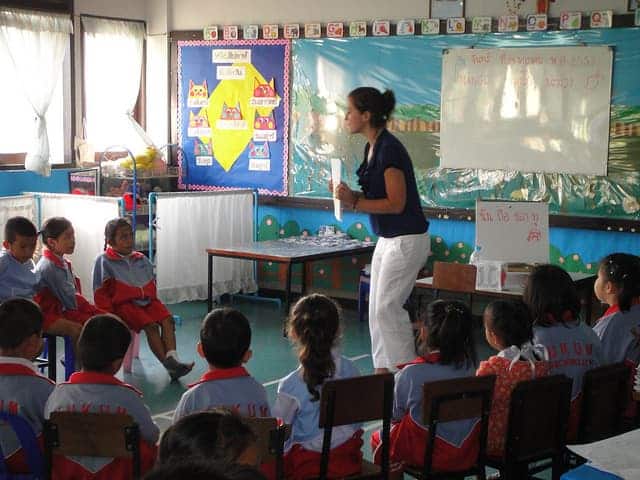
Techniques
Is what actually happens in the classroom. It is a particular trick or stratagem used to accomplish an objective.

Design
21st century LANGUAGE TEACHING METHODS
Alternatives to PPP
MMM
A more learner-centred, child-friendly view of PPP, used by University of Nottingham ITE team.
ESA
Engage:The teacher generates interest in the language point, vocabulary, etc., to be taught Study:Study the main language point Activate: students are encouraged to use all and/ or any of the language they know.
TTT
TEST:Provide the students with an activity which uses the target language. Monitor the students and see what they can and cannot do. TEACH:Teach the students the language they do not know or have trouble with. TEST:Test the students on the language you have just taught in the form of one or more activities.
TBL
Makes the performance of meaningful tasks central to the learning process. Students are presented with a task they have to perform, instead of a language structureto be learnt.
